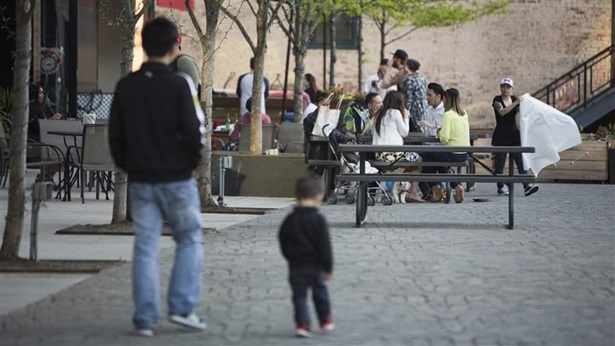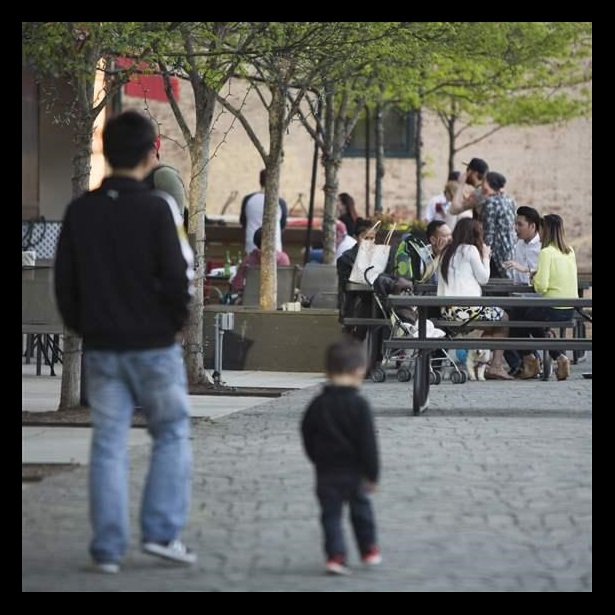Who’s Moving Within Philadelphia
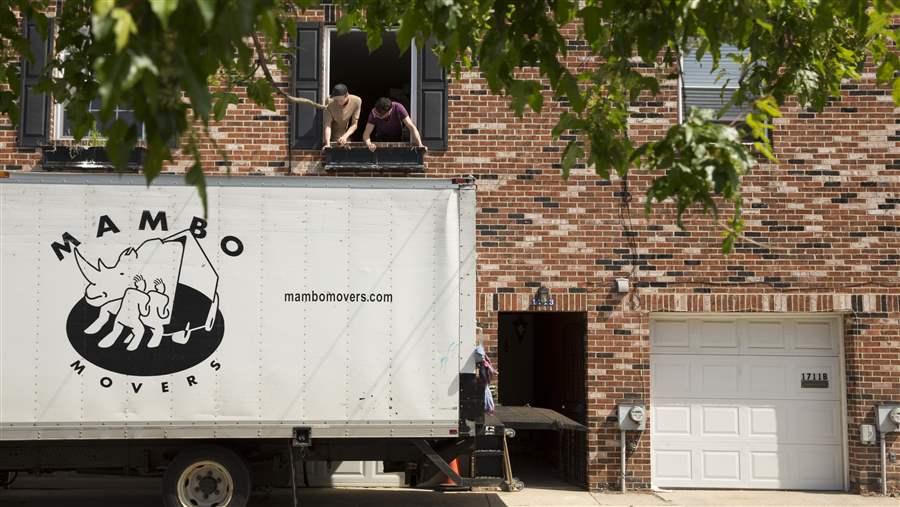 © The Pew Charitable Trusts
© The Pew Charitable TrustsPhiladelphia’s recent population growth has policymakers looking at who is moving into the city and who is leaving. Our latest brief, “A Portrait of Philadelphia Migration,” sheds light on this topic, showing that college graduates and non-Hispanic whites were overrepresented among both new arrivals and those departing the city, compared with their presence in Philadelphia as a whole. It also found that nearly two-thirds of those arriving were ages 18-34 and that the largest share of newcomers had moved into Center City and surrounding neighborhoods.
Building on that research, we decided to examine another aspect of migration in Philadelphia: who is moving from one place to another within the city’s boundaries. According to the latest census data, covering 2011-13, an average of 156,900 people moved within Philadelphia each year—far more than the number of those coming into the city or leaving it. The people who made those moves did not look much like the newcomers or departing migrants. Instead, they more closely resembled the population of Philadelphia as a whole in terms of income, educational attainment, age, and household composition. But those moving within the city were more likely to be poorer or living with children under 18 than the city’s overall population, and they stood out from all three groups—the overall population and those arriving and leaving—in terms of ethnicity: Nineteen percent were Hispanic, compared with 13 percent of arrivers, leavers and residents.
Income
In the United States, mobility is often associated with poverty and the instability that comes with it; on the whole, the poorer one is, the more likely one is to move—and the move often is not long distance.1 According to the census data, this held true for Philadelphians moving within the city during the period studied.2 Forty percent of these movers lived in households that made less than $25,000 annually, and one in six were in households with total incomes of less than $10,000.
This made Philadelphia’s intracity movers poorer than its population as a whole; from 2011 to 2013, only 31 percent of all Philadelphians lived in households that made less than $25,000 a year, and one in nine were in households with incomes below $10,000. These movers were also a lot poorer than those leaving or arriving. Twenty-six percent of migrants who left and 22 percent of new arrivals lived in households with total annual incomes of more than $100,000. Only 10 percent of intracity movers were in households with similar economic resources.
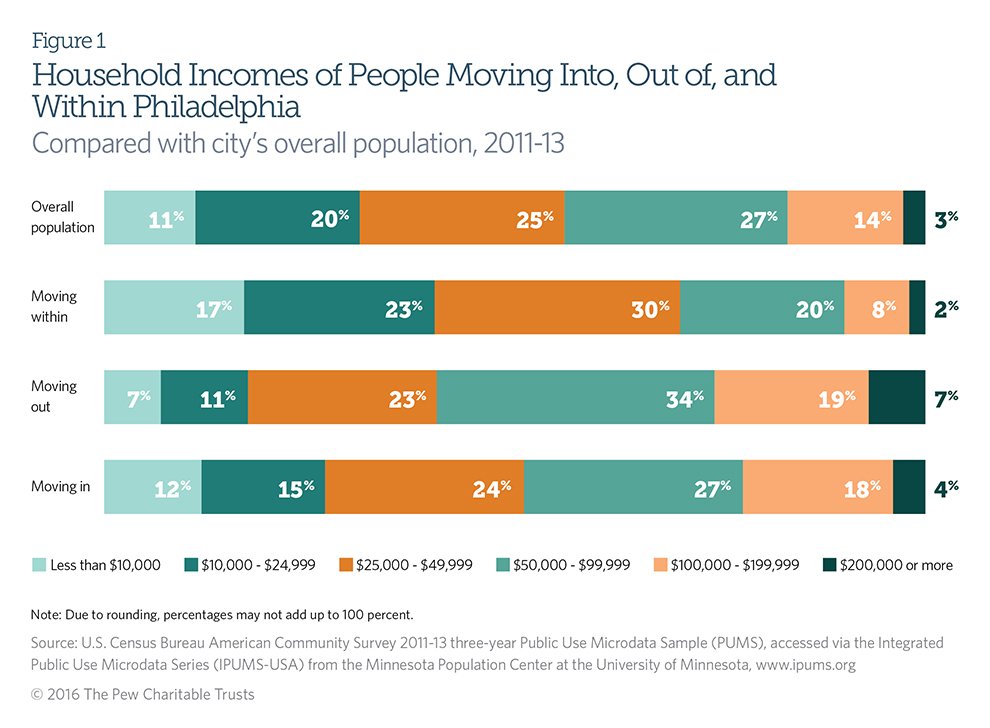
Educational attainment
As a group, those moving within the city had slightly less formal education than Philadelphia’s population as a whole—and much less than newcomers and those who left. Twenty-two percent of those age 18 or older moving within the city had less than a high school diploma, compared with 18 percent of all Philadelphians, 10 percent of newcomers, and 11 percent of departing migrants. This is consistent with national trends: Most movers with less than a high school diploma stayed within the same county during the period examined.3
At the other end of the educational spectrum, the pattern was similar. Only 22 percent of intracity movers in Philadelphia had college degrees or better, compared with 23 percent for all city residents and 41 percent for newcomers and 37 percent for out-migrants.
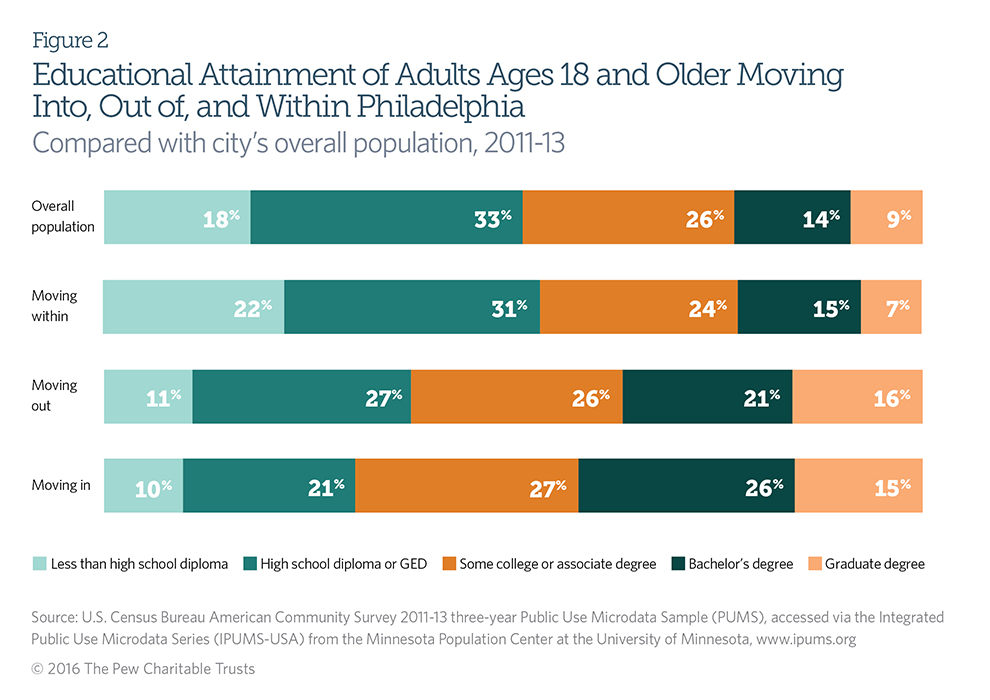
Age and household composition
Intracity movers were quite a bit younger than the city population as a whole. For instance, 11 percent of them were under age 6, compared with 8 percent of all city residents. Forty-three percent were between the ages of 18 and 34, which was well above the citywide representation of 29 percent for that age group but lower than the percentages among newcomers (65 percent) and out-migrants (48 percent).
Young adults are highly mobile. Nationally, 27 percent of people ages 18-34 reported moving in the past year.4 This is largely due to events that can lead to changes in residence for many young adults, such as enrolling in college, starting full-time employment, and getting married.
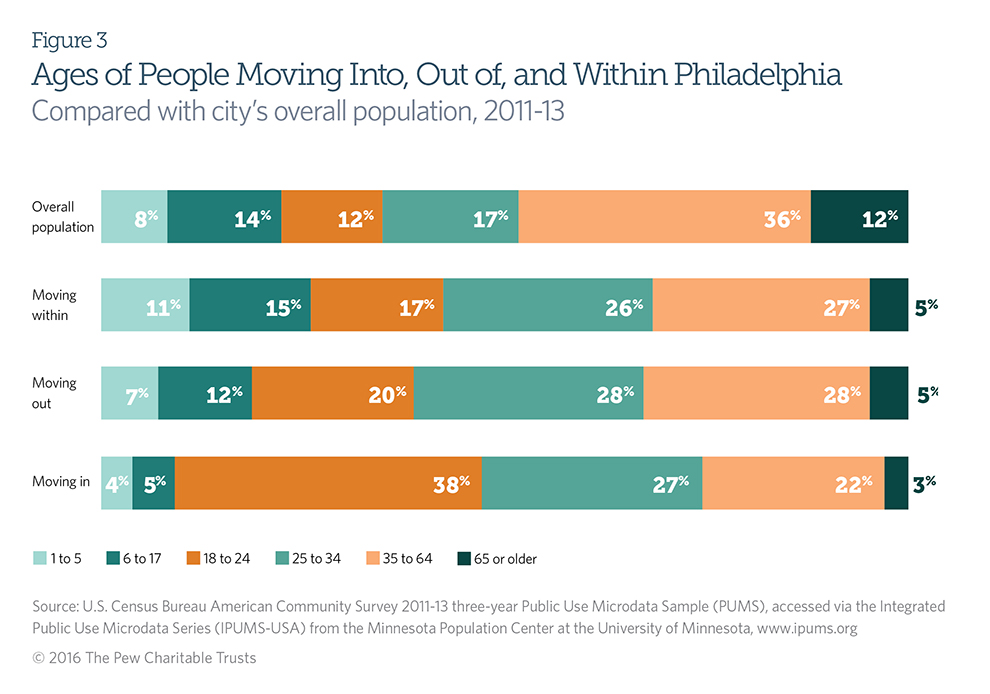
Another way of looking at the same data is to examine the makeup of the households that moved within Philadelphia during the period studied. Fifty-three percent of those households consisted of families with children under the age of 18. That was higher than the percentage for those leaving (45 percent), new arrivals (28 percent), and Philadelphia residents as a whole (48 percent).
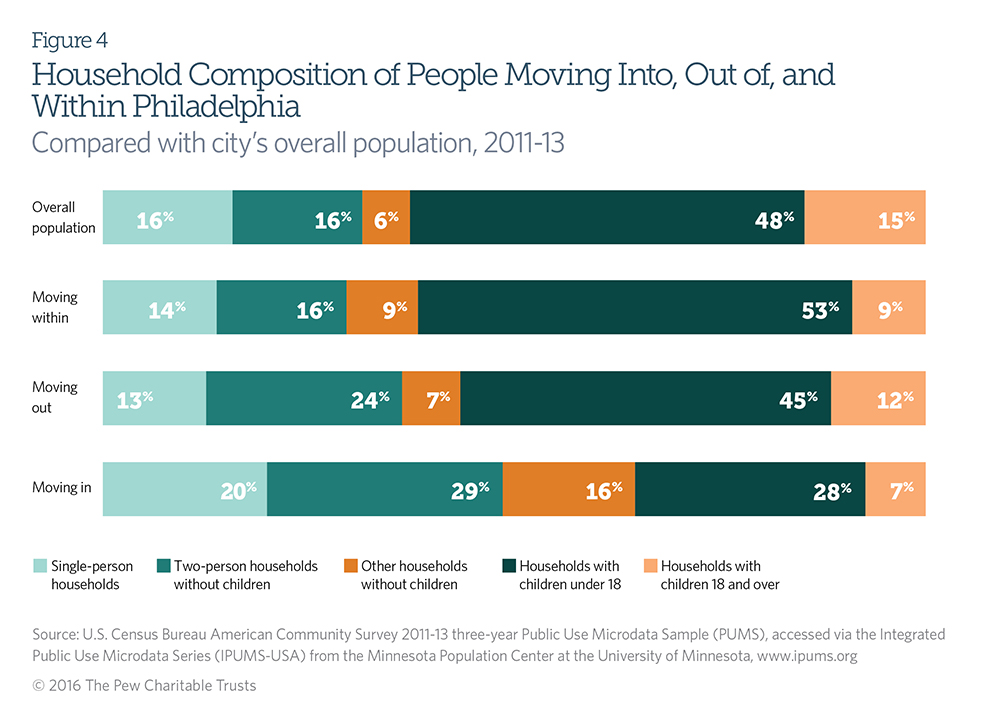
Race and ethnicity
Relative to the city population as a whole, Hispanics were the only major ethnic or racial group that was overrepresented among Philadelphians moving within the city. They made up 18 percent of these movers but only 13 percent of the citywide population. The group underrepresented among those moving within Philadelphia was non-Hispanic whites; they constituted 36 percent of the city’s population but just 32 percent of intracity movers. Among newcomers and people moving out of the city, non-Hispanic whites were overrepresented.
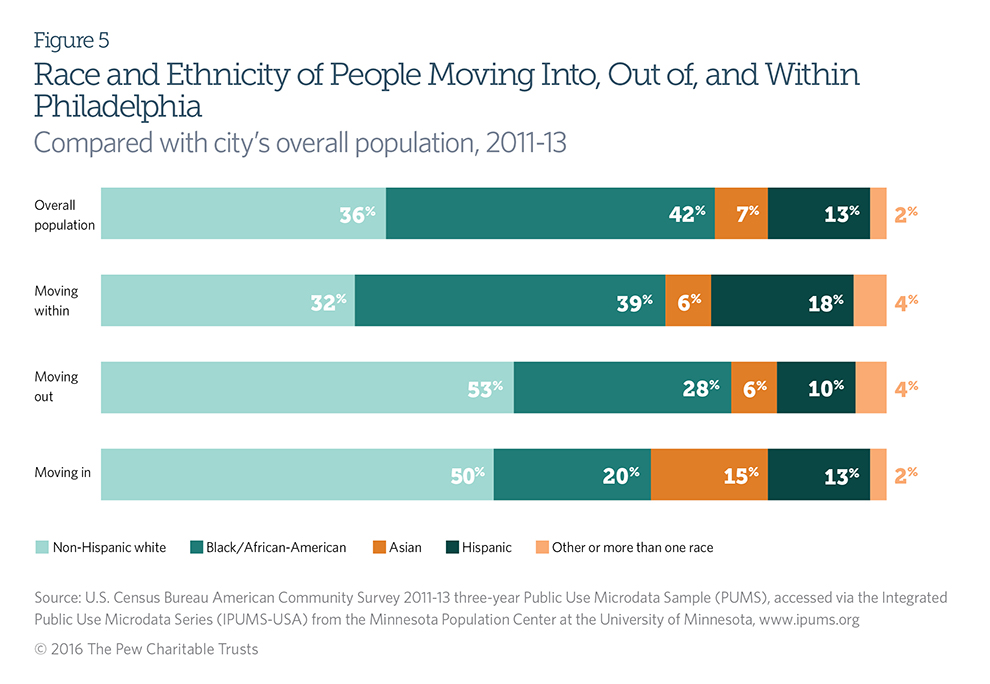
Endnotes
- David K. Ihrke, Carol S. Faber, and William K. Koerber, “Geographical Mobility: 2008 to 2009,” Current Population Reports (Washington: U.S. Census Bureau, 2011), https://www.census.gov/prod/2011pubs/p20-565.pdf.
- “Integrated Public Use Microdata Series: Version 6.0” (machine-readable database based on the U.S. Census Bureau’s American Community Survey, distributed by the Minnesota Population Center at the University of Minnesota, 2015), https://usa.ipums.org/usa.
- Ihrke et al., “Geographical Mobility.”
- Ibid.


America’s Overdose Crisis
Sign up for our five-email course explaining the overdose crisis in America, the state of treatment access, and ways to improve care
Sign up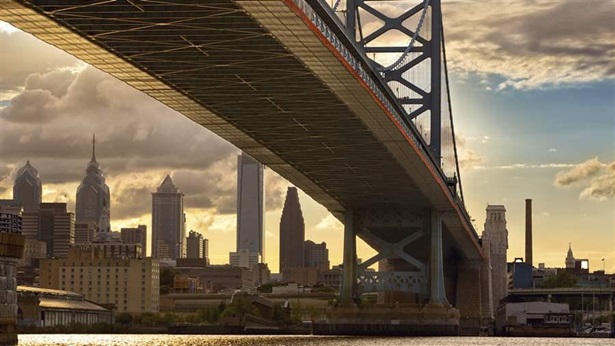

A Portrait of Philadelphia Migration
Who is coming to the city—and who is leaving
